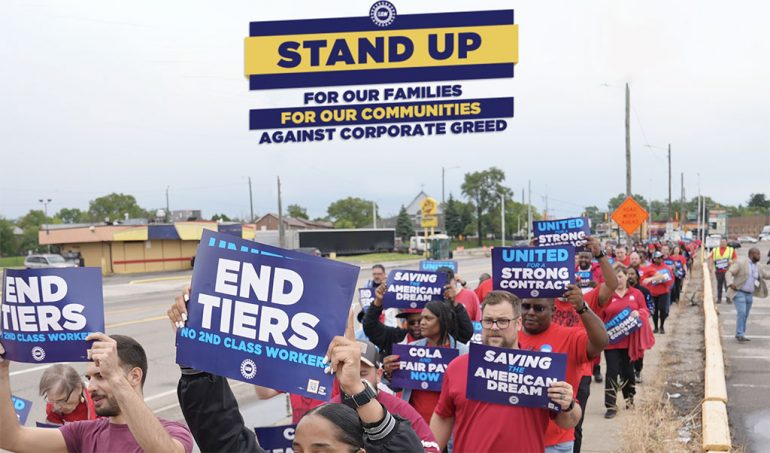
Negotiations between the United Auto Workers (UAW) and Ford Motor have shown promising signs of progress as they work towards a new labor agreement. According to sources familiar with the ongoing talks among the Detroit Three automakers and the union, both sides have made strides in narrowing their differences regarding pay increases. This development comes after Ford Motor presented a new offer that has sparked what has been described as “really active” negotiations.
UAW President Shawn Fain is slated to provide an update to the union’s substantial membership, which spans across Ford, General Motors (GM), and Chrysler parent company Stellantis. The communication on Friday will serve to inform members of the current status of negotiations and the potential for further actions, such as strikes at additional plants.
While discussions with Ford have seen noteworthy progress, negotiations with Chrysler’s parent company, Stellantis, and other automakers, alongside the UAW, have also been active in recent days. Stellantis has chosen not to comment on the ongoing negotiations.
Ford’s recent offer included a “more than 20% general wage increase” without compounding, with a double-digit increase in the first year. Although specifics of the proposal were not disclosed, when combined with previously offered cost-of-living adjustments, the total wage increase could approach 30% over the life of the contract.
However, it is important to note that critical issues such as pay, union representation in future battery plants, and the UAW’s pursuit of retirement plans guaranteeing defined benefits remain unresolved. Ford’s Chief Financial Officer, John Lawler, has emphasized that their retirement offer aims to provide UAW workers with the assurance of retiring with $1 million in savings.
Despite progress in negotiations with Ford, General Motors appears to be preparing for a prolonged labor dispute. The company secured a new $6 billion line of credit and estimated that the United Auto Workers’ strike cost them $200 million during the third quarter.
The strike, which began on September 15, is now in its 20th day. It has resulted in two GM assembly plants and 20 parts distribution centers being shut down. The cost for General Motors includes production stoppages at key facilities, including one in Wentzville, Missouri, and a ripple effect leading to a production halt at a GM car plant in Kansas due to parts shortages.
General Motors’ decision to secure a new line of credit until October 2024 reflects their preparedness for a potentially protracted strike, which could impact the production of highly profitable vehicles like large Chevrolet and GMC pickup trucks and SUVs.
In addition to financial preparations, the strike is taking a toll on workers. Ford announced layoffs affecting 400 workers in Michigan, while Stellantis had to furlough 370 workers in Ohio and Indiana due to the ongoing strike.
Furthermore, the repercussions of the labor dispute are not limited to the automakers themselves. The Motor Equipment Manufacturers Association reported that nearly 30% of auto parts manufacturers have already laid off workers due to the UAW strikes. Additionally, 60% of these manufacturers anticipate further layoffs by mid-October if the walkouts continue, highlighting the widespread impact of this labor dispute on the broader automotive industry.

Lloyd Tobias is a seasoned automotive journalist and passionate enthusiast with over 15 years of experience immersed in the world of cars. Whether it’s exploring the latest advancements in automotive technology or keeping a close pulse on breaking industry news, Lloyd brings a sharp perspective and a deep appreciation for all things automotive. His writing blends technical insight with real-world enthusiasm, making his contributions both informative and engaging for readers who share his love for the drive. When he’s not behind the keyboard or under the hood, Lloyd enjoys test driving the newest models and staying ahead of the curve in an ever-evolving automotive landscape.